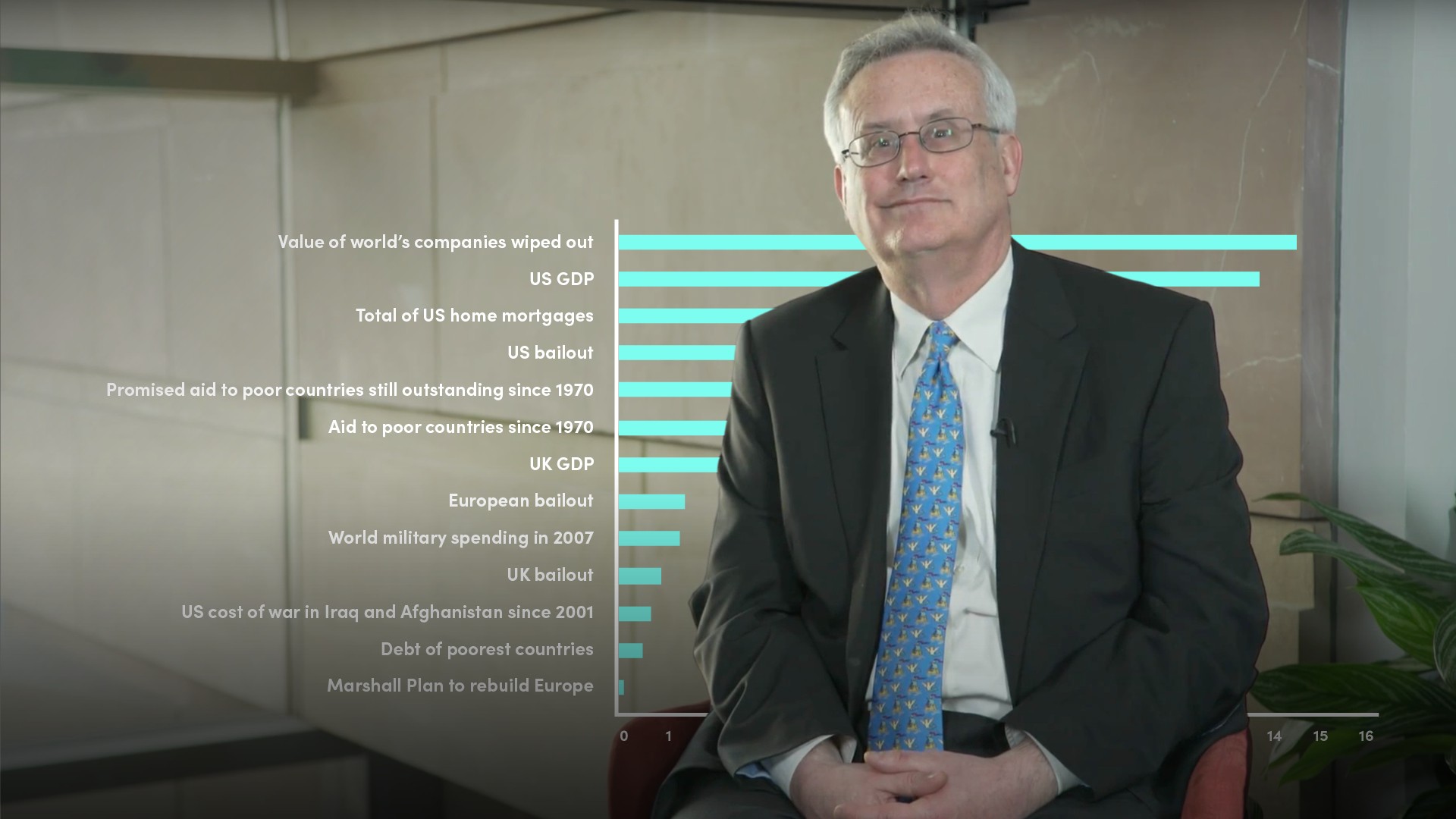
The Great Depression

Peter Eisenhardt
30 years: Capital markets & investment banking
Peter provides an overview of the effects and causes of the 10-year great depression, which began with the stock market crash of October 1929.
Peter provides an overview of the effects and causes of the 10-year great depression, which began with the stock market crash of October 1929.
Subscribe to watch
Access this and all of the content on our platform by signing up for a 7-day free trial.

The Great Depression
16 mins 9 secs
Key learning objectives:
Describe the market environment in the run-up to the Crash
Describe the four monetary policy errors outlined by Milton Friedman and Anna Schwartz in “A Monetary History of the United States, 1867-1960” that they cite as the most powerful causes of the Depression
Outline 10 metrics that defined how serious The Great Depression was
Comprehend some of the economic policy responses
Outline the key market reforms following the Crash
Overview:
The Great Depression began with the October 1929 U.S. stock market crash. The Great Depression significantly impacted the US economy and the world. Causes of the Great Depression can be narrowed down to policy in the real economy, specifically errors within monetary policy, and the structure of the markets which were largely unregulated.
Subscribe to watch
Access this and all of the content on our platform by signing up for a 7-day free trial.
List 10 metrics that defined how serious The Great Depression was
- The Dow Jones Industrial Average lost 82% of its value between Oct 1929 and Jul 1932
- By March 1933, the banking system had collapsed and President Roosevelt was forced to declare a national bank holiday
- Economic output plunged almost 30%
- Unemployment soared to nearly 25%
- Prices fell by 10% each year.
- Construction virtually halted.
- Crop prices fell by about 60%.
- Primary sectors, such as mining and logging, shut down.
- Hundreds of thousands of Americans became homeless.
- International trade plunged by more than 50%
What were some of the economic policy responses and were they effective?
Over-optimistic business investment during the 1920s had made a downturn inevitable. To understand the Depression and prevent it from happening again, governments and economists made poor economy policy choices that arguably made things worse:
- The top tax rate increased from 25% to 83%
- Regulations on hiring and investing grew
- The Smoot-Hawley Tariffs raised US import duties; retaliation stifled international trade
Describe the market environment in the run-up to the Crash
- Financial markets were largely unregulated
- Retail investing had become widespread, encouraged by Wall St, celebrity advertising and new technologies such as ticker-tape machines
- Individuals could buy stocks on 90% margin
- 40% of all retail US bank lending went to investors to buy stocks
- There was little to stop big firms engaging in insider trading and manipulating the market
List key market reforms following the Crash
- Creation of the Securities and Exchange Commission
- Disclosure laws
- Limitations on margin trading
- Regulations on trading
- The Glass-Steagall Act, which forced a separation of commercial and investment banking and led to the break-up of some large US banking groups
Describe the four monetary policy errors outlined by Milton Friedman and Anna Schwartz in “A Monetary History of the United States, 1867-1960” that they cite as the most powerful causes of the Depression
- Tightening monetary policy from the spring of 1928
- The Fed wanted to slow margin lending, which was fuelling the stock market bubble.
- But tightening was not justified by the economic environment: the economy was emerging from recession, commodity prices were falling, and there were few signs of inflation.
- The gold standard
- Under the gold standard, central banks maintained the fixed value of their currencies by buying and selling gold at the legally determined rate. But the system was subject to speculative attack.
- Britain had been forced to leave the gold standard in 1931 following a speculative attack on sterling that had depleted the country’s gold reserves. Fearing a devaluation of the US dollar, depositors withdrew funds from US banks. During the 1930s, thousands of US banks failed.
- Rather than protecting the banks, the Fed chose to focus on preventing the loss of gold reserves to protect the dollar. To do so, it sharply raised interest rates to compensate currency speculators rather than cutting rates to protect the economy and the banks. The gold standard made it more difficult for the financial system to function.
- Reversal of monetary policy
- With the Depression well advanced, the Fed succumbed to Congressional pressure to ease. Some members of Congress viewed the Depression as the necessary purging of financial excesses built up during the 1920s, believing that easing monetary policy only delayed the inevitable adjustment
- Others noted that nominal interest rates were already near zero so no more should be done.
- Policymakers failed to realise that deflation meant the real cost of borrowing was still very high.
- When Congress adjourned in July 1932, the Fed reversed its policy of easing and the economy relapsed dramatically.
- Fed's neglect of the problems of banks
- By the time President Roosevelt declared the banking holiday, about half of US banks had closed or merged. Surviving banks didn’t expand deposits and loans to replace those of the banks lost but retrenched for safety and people hoarded cash. This removed money from circulation, adding to deflationary pressures.
- A central element of the Fed’s original mission had been to provide assistance to the banking system and the Fed could have been more aggressive in lending against collateral. But many of its leaders subscribed to the “liquidationist” thesis of Treasury Secretary Andrew Mellon, who believed weeding out weak banks was necessary for the recovery of the banking system.
Subscribe to watch
Access this and all of the content on our platform by signing up for a 7-day free trial.

Peter Eisenhardt
There are no available Videos from "Peter Eisenhardt"



























